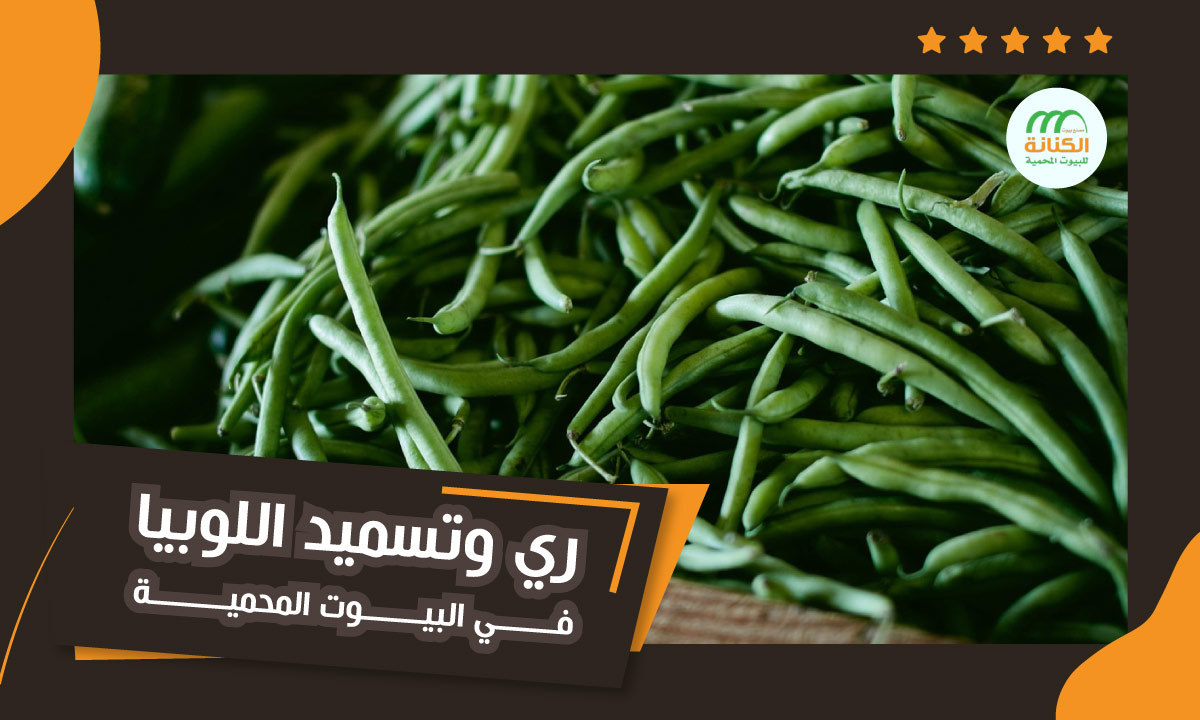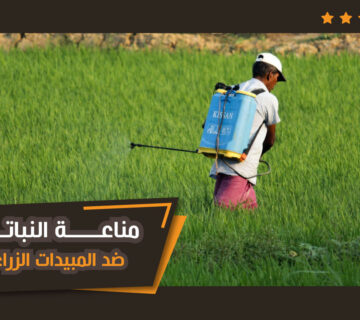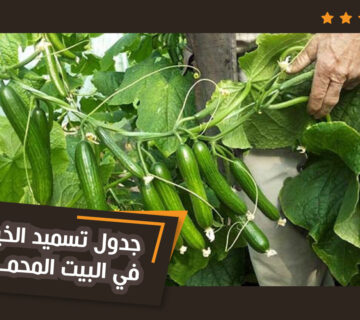Greenhouses do not only need to prepare their soil and start providing the appropriate environmental and climatic conditions for their plants. Despite the importance of these steps, there are other very important measures that the farmer cannot neglect, the most important of which is defining fertilization and irrigation programs and systems according to the nature of the crop.. We will focus on this. The article is on irrigation and fertilization systems for cowpea crop inside the greenhouse.
قائمة المحتوى
Cultivation of cowpea in greenhouses
- Cowpea is a plant that needs high temperatures, and is even able to withstand drought conditions.
- On the other hand, it is greatly affected by cold and frost factors.
- Therefore, the appropriate time to plant it indoors is the beginning of autumn or the beginning of spring.
- It also needs sandy and clay agricultural soils to achieve optimal growth, although it can also be relied on acidic soils, yet alkaline soils remain an unsuitable option for them.
Irrigation and fertilization systems in the greenhouse
- Greenhouse needs to follow irrigation and fertilizing is successful, and its success comes from its suitability for the types of crops to be produced.
- Although the irrigation programs followed are different for the different types of plants planted, there are some general rules that must be observed in this regard.
- For example; It is necessary to use quality water that is free of any toxic elements or substances, and the quantities of salts and acidity present in it should not exceed the reasonable limit.
- Adequate irrigation dates should also be determined according to the moisture level of the agricultural soil.
- This is in addition to choosing the right irrigation method, whether it is surface or underground irrigation systems, sprinkler irrigation, or drip irrigation..etc.
- As for the level of fertilizers; The farmer needs to determine the type of fertilizer on which he will depend, and whether it is organic or chemical, in addition to choosing the appropriate method for distributing the quantities of fertilizer to the plants.
Irrigation of cowpeas
- With regard to cowpea crop in particular, the farmer needs to irrigate the crop every two days at the beginning of the planting process, specifically in the daytime or at sunset.
- This is so that the soil moisture during the first month increases the ability of the crop to grow rapidly.
- This is, of course, taking into account the reduction in irrigation during the fall and winter seasons; So that the rates reach only one liter during the day, and increase them to two liters during the summer to protect the plant from drying out.
Adequate Fertilization System
- Of course, when using any agricultural soil, the farmer needs to determine first the extent of its need for different fertilization systems, and whether it is saturated with all the nutrients or if it suffers from a deficiency in one or all of them.
- In general, organic natural fertilizer consisting of animal and bird manure is the most suitable for cowpea crop in greenhouses.
- As for chemical fertilizers, you can use a mixture of potassium, sulfur and phosphorous to help your plant grow normally and soundly.
Besides irrigation and fertilization systems, you will need to know the appropriate temperatures to produce cowpea inside greenhouses, as well as the type of soil suitable for cultivation, in addition to continuous monitoring of the condition of the greenhouse, and to ensure that the plant is not exposed to frost or drought, or even infection with harmful species. From insects and agricultural pests.

 then 'Add to home screen'
then 'Add to home screen' then 'Add to home screen'
then 'Add to home screen'







لا يوجد تعليقات